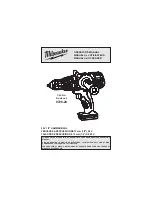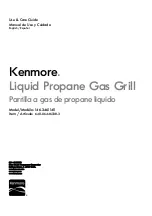
Blaze Outdoor Products Instructional Book
Page | 11
•
Non-Combustible Enclosure
: The BLAZE GRILL must be installed in a
NON-COMBUSTIBLE
ENCLOSURE ONLY
.
The determination of whether a location is combustible or non-combustible
construction is made by the local fire marshal, building inspector or the local safety authority having
jurisdiction.
•
Clearance from Combustibles:
Ensure your appliance remains at a distance of at least 14” from sides
& 16” from back from any combustible material such as wood, gyprock, paper and plants. Do not store
combustible materials, gasoline or flammable liquids or vapors around the appliance. The outdoor kitchen
structure itself should be constructed completely out of non-combustible materials.
•
Adequate Ventilation:
Ensure there is adequate ventilation for both the appliance, grill cart and/or
island cavity. This is required not only for proper combustion, but also to prevent gas build up. While
the amount of venting required varies on a case by case basis, consult with your local licensed professional
and local code for adequate venting requirements. Keep the ventilation openings of the enclosure free and
clear from any debris.
•
Firm Level Surface:
Use your appliance only on a firm level surface. This appliance is not designed for
recreational vehicles, and should not be installed on a boat or marine craft.
•
Protection from Weather:
Keep the appliance protected from adverse weather, including rain and winds.
Wind, particularly coming into the rear of the grill, can affect the exhaust from escaping from the
grill. This can back up the heat behind the control panel potentially creating a gas leak, damage to
the product, and injury.
•
Maintenance Access:
When your appliance is installed, you should be able to access the gas supply
line including the gas piping or hose, gas regulator, gas cylinder and any shut off valves. Allow clear access to
the entire gas supply hose and regulator.
•
Partial Enclosures:
Many backyards have areas that are partially closed off, such as balconies and
pergolas. In some cases, it is hard to decide whether these partially enclosed areas should be classified as
indoor areas, particularly in terms of permanent (non-closable) ventilation. Consult the AHJ (Authority Having
Jurisdiction) or local contractor of any uncertainty.
•
When installing a Blaze Appliance under an overhead construction:
o
A minimum 6 foot of clearance is required between the countertop and the overhead construction.
o
When installed under a combustible overhead construction, the area above the Blaze appliance must
be covered with a vent hood. The vent hood must provide protection for the combustible overhead
construction.
o
Blaze appliances
must not
be installed under unprotected combustible overhead construction.
o
When installed under overhead non-combustible construction, a vent hood is still recommended. Gas
appliances produce a large amount of smoke. The covered area should be properly ventilated.
o
When using a vent hood, the area above the cooking surface of the grill must be covered with a vent
hood larger than the cooking area of the grill, and with a minimum of 1200 CFM for proper outdoor
application.












































